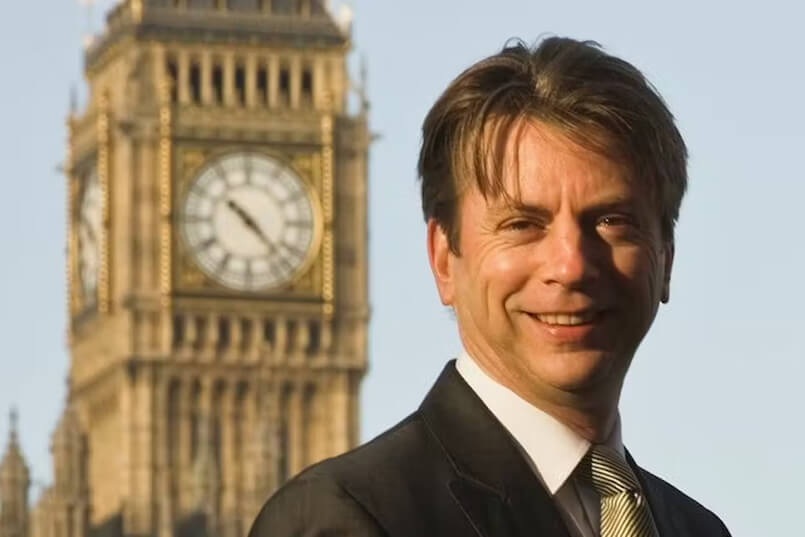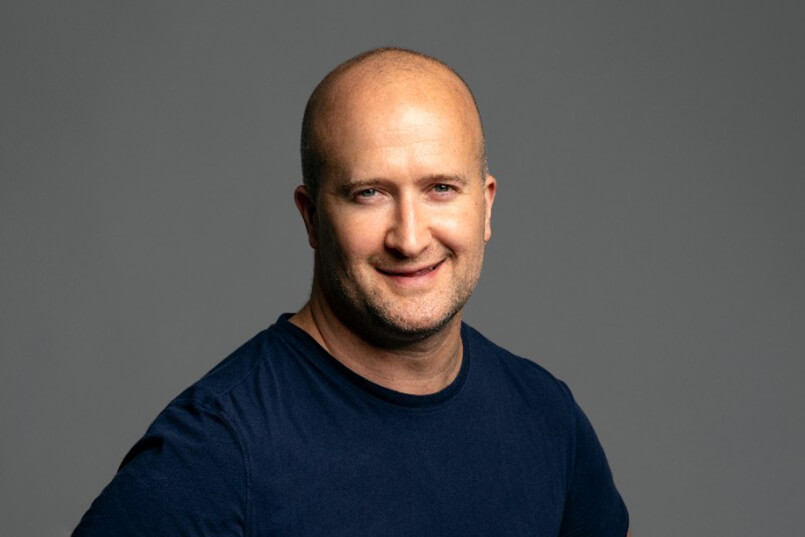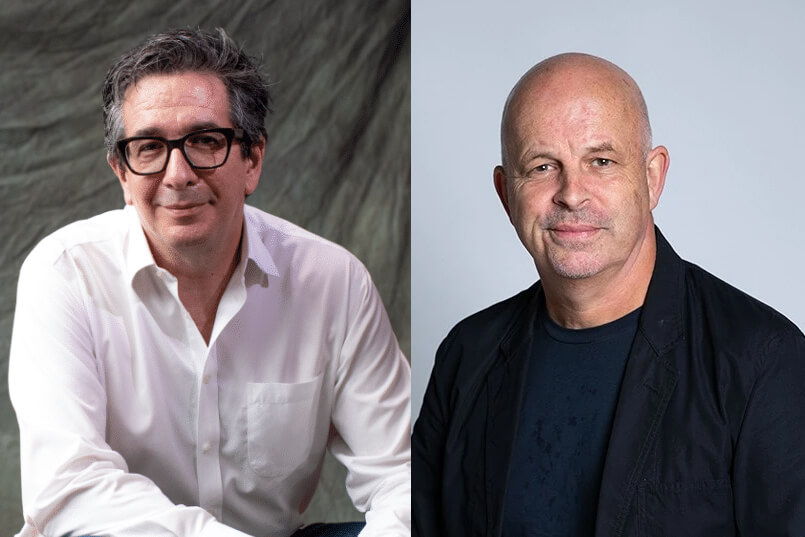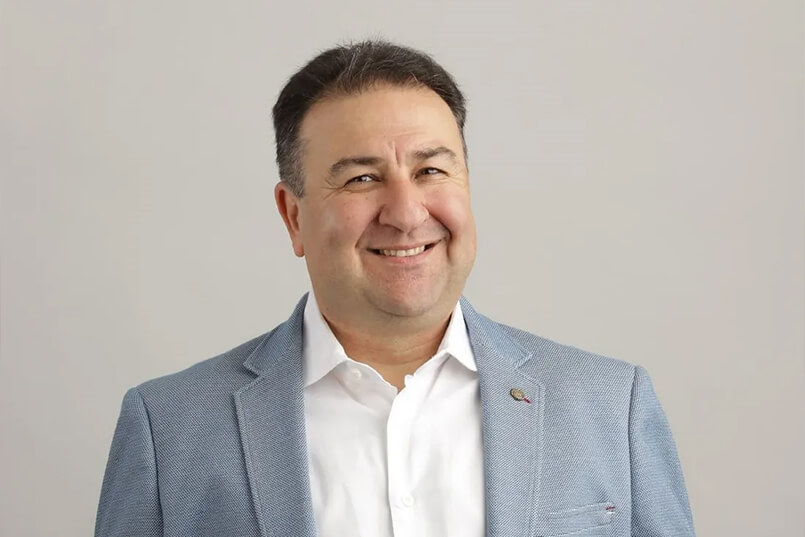Michael Moszynski, the CEO of London Advertising and the recently appointed Chair of WONA Digital, talks about the evolving landscape of agency pitches, the impact of technology and procurement on the selection process, and the importance of human interaction in fostering successful client-agency relationships.
Michael shares the challenges faced by agencies in a technology-driven environment, the value of long-term relationships, and the need for creativity in marketing. The conversation also introduces the BetterPitch Framework, which outlines key principles for improving the pitch process.
You can listen to the podcast here:
Follow Managing Marketing on Soundcloud, Podbean, TuneIn, Stitcher, Spotify, Apple Podcast and Amazon Podcasts.
The intermediary said not to bother, our chairman said not to bother, and all the senior people in the industry said, “Don’t do it, you’re wasting your time. They clearly want something new.” So, we’re tenacious buggers, and our internal motto is never give up, so we felt we had to do it, and we retained it.
Transcription (Edited):
Darren:
Hi, I’m Darren Woolley, founder and CEO of TrinityP3 Marketing Management Consultancy, and welcome to Managing Marketing, a weekly podcast discussing the issues and opportunities facing marketing, media, and advertising with industry thought leaders.
If you enjoy the podcast, please like, review, or share this episode.
Technology is disrupting advertising, media, and marketing, but what happens when it takes over the agency selection process? My guest today has seen the pitfalls when procurement portals remove human interaction from pitching. He’s endured marketers hiding behind technology, requiring agencies to enter huge amounts of data for selection without any human contact. Are we heading toward a world where a client’s AI talks to an agency’s AI to decide who gets the job?
Please welcome Michael Moszynski, the CEO of London Advertising and recently appointed chair of Wona Digital. Welcome, Michael.
Michael:
Hello.
The Value and Decline of the Pitch Process
Darren:
With initiatives like the Pitch Positive Pledge, there’s clearly a lot of concern about pitching, which wasn’t there decades ago when it was seen as the industry’s lifeblood and sport.
Michael:
Pitches were vital for galvanizing the agency team and building the agency’s character, as everyone worked on the full range of services—from communication strategy to creative execution—in a condensed period. Even years ago, there was concern that agencies gave away their key value—their strategic thinking—for free. Now, with the automation of processes, agencies may not even get paid for the later execution work, raising questions about the revenue model. Pitches had a holistic effect, essentially condensing a three-year client program into weeks.
Darren:
We’ve lost the theater of those times. I recall a great story about British Rail pitching, where the winning agency had a person at reception filing her nails and ignoring the client, only for the agency to burst out and say, “This is how your customers see British Rail.” They then presented the brilliant line, “We’re British Rail we’re getting there.”
Michael:
The theater doesn’t work down an IT portal. My own anecdote is from when I set up M&C Saatchi in Hong Kong, pitching for Carlsberg in Greater China as a small, new agency. The client was concerned about our physical production capability. We asked each client to write a sentence on their brand strategy. While we presented, our production team turned their lines into beer coasters. After the pitch, we took them via helicopter to the Peninsula’s rooftop bar, where their beers were served on their custom coasters. They didn’t buy our creative or strategy, but they bought the agency’s attitude, and we were appointed.
Flaws in Speculative Creative and the Workshop Alternative
Darren:
One criticism of speculative creative in pitching is that the work rarely sees the light of day, yet it’s used to select an agency even though it’s developed with little client input.
Michael:
That’s right; it’s like chucking spaghetti at the wall. However, there are exceptions. Our most famous campaign for Mandarin Oriental, “I’m a fan,” was what we pitched with in Hong Kong in 1998, and it’s been running unchanged for 25 years. That client truly engaged with us.
Today, I don’t think you can use a helicopter to win a pitch. But there’s a middle ground. For a pitch for a Canadian airline run by Trinity, we used a workshop process instead of a formal presentation. We were given challenges, and how we dealt with them was up to us. The core client team invested a full afternoon with us, working on different challenges in different rooms. This exploratory approach allowed for client input, which is very constructive. This highlights why technology, by getting in the way of human interaction, creates a problem for determining chemistry.
Darren:
We developed that workshop approach back around 2005. A consultant suggested, instead of relying on an idea, why not do a “test drive” and get both parties to work on a problem together? While marketers initially default to wanting to see the “best idea,” when you suggest spending four or more hours in a workshop with each agency, they initially balk at the time. In fact, it ends up taking less time overall and leads to a much better decision. Our exit polling shows marketers say it’s better and they learn more about the agencies. Agencies also get an insight into how marketers work.
Michael:
Yes, I agree. It was more engaging and gave us the opportunity to build the best work, which comes from the best relationships. The pitch process is inherently artificial. Focusing the pitch on different ways to resolve a challenge, rather than a final campaign, allows for the necessary engagement to see if the parties “get on” and how a relationship could be built. It also avoids an arbitrary decision.
Budget, Value, and Maintaining Incumbent Relationships
Darren:
It’s interesting how marketers choose an agency, and then the procurement team comes in to “do the deal.” Value is a combination of quality and price, yet these two elements often feel separate.
Michael:
I’m wary of pitching to clients who don’t provide a budget; I feel they are “tire kickers.” The budget should set expectations.
Darren:
There are red flags for an agency, such as a client that isn’t focused or lacks a clear articulation of their needs. Another is an unclear budget expectation. Clients should look for who offers the best value against that budget, not just the lowest price. This often happens when the pitch is driven by wanting to “know what else is out there,” not by solving a specific problem with the incumbent.
Michael:
The best role for an intermediary is to work with the client to determine if the existing relationship is salvageable. Issues often fester without being addressed. Clients may think the agency is the problem when they have an internal dilemma they haven’t resolved. If a long-standing, productive relationship exists, you’re better off reevaluating if you can make it work.
Darren:
A health check on a long-term relationship is good diligence. History shows that longer-managed relationships perform better than constant chopping and changing. Marketers underestimate the time needed—a minimum of three to nine months—to get a new agency up to speed.
Lately, finance or procurement teams have mandated that every contract end must result in a competitive tender. We addressed this by offering a commercial review. This review looked at the current fee, relationship performance, and contract, providing a scorecard on where value was created or lost. This satisfied due diligence and governance needs. We converted about 60% of pitches to a commercial review and got 100% of those to sign up for another three years with the incumbent without a pitch, as it was less disruptive.
Michael:
It’s not just long-term relationships that provide value; it’s long-term campaign ideas that continue to run. Mark Ritson’s work on IPA Effectiveness Awards winners showed that the incremental return on investment of a campaign with longevity is phenomenal. Chopping and changing means nothing gains traction. A strong, long-term creative idea is an asset that needs to be nurtured.
Darren:
Procurement often sees the tender as the “only way of testing the incumbent against the market.” However, the tender process is designed to select a new vendor, not the best one. The incumbent is at a disadvantage: new agencies can promise the world because they haven’t had to deliver yet. It’s a choice between the comfortable slipper and the exciting new shoes.
Michael:
The analysis is that incumbents win only one in four pitches. I figured it was one in ten. We were asked to re-pitch for Mandarin Oriental after 24 years. Everyone advised us not to bother, saying the client wanted something new. Our motto is “never give up,” so we pitched and retained the business against the odds.
Darren:
That’s a great story. Perhaps the process made them realize the value of what they had; people only truly value what they have when they are about to lose it.
The Threat of Technology and Procurement Portals
Darren:
Our annual state-of-the-pitch survey shows an increased use of procurement technology. These vendor management systems require registering, providing huge amounts of information, and are often the start of a tender process. You’re seeing a trend where it is the start, the middle, and the end.
Michael:
I’m for enhanced efficiency, but this technology is creating a barrier between the agency and the client team. I’ve been involved in three recent pitches where there was zero contact with the client team before they made a decision. I told one CEO they wouldn’t get the best value without the opportunity to engage and find out about the potential relationship. My phrase, “the client is hiding behind the technology,” upset him.
The only interaction allowed was submitting questions, which were then replied to in writing and shared with all competitors. This prevents an agency from asking a smart question or seeking feedback on a specific strategy. For two pitches, this process was used to select a shortlist, but you still need chemistry meetings.
Darren:
What if you shortlist three agencies and you can’t stand their personalities or values?
Michael:
I think clients who go through that process should be asked to defend it, as I find it indefensible.
In one bad pitch, we were addressing a complicated challenge about lobbying government. We asked the procurement person if it was purely a strategy pitch with no expectation of creative ideas. They replied, “No, just focus on your strategy. You’re not expected to share any creative.” We submitted our strategy—in which we had world-class experience—and were rejected because “the creative ideas of the other agencies were deemed better.” When I pointed out they told us not to submit creative, their reply was that they took “creative” to mean “finished artwork.” There was zero engagement with the client team. The nature of the task should not have been fixed through a creative pitch anyway, and you should never ask agencies to present creative without human interaction. This is why I joked about the AI talking to AI scenario.
Darren:
Technology can make things more efficient, but the focus must be on whether it’s enhancing the opportunity for success or becoming a barrier. If you’re procuring a commodity item, an online tender might work. But for advertising services, what’s being procured—like the chemistry between people and the ability to explore new opportunities—is not definable on paper.
Standard procurement behaviors often commoditize what agencies offer. Sharing questions with everyone, supposedly for a level playing field, actually commoditizes everyone and makes it harder to separate the agencies.
Michael:
We are human, emotional beings. We are competing for human attention against 10,000 commercial messages a day. Branding is a human thing. Without the human relationship to have those discussions and develop work that propels a brand to be front of mind, I think it cannot be done purely by technology.
Darren:
While marketing science is rising, advertising communication is still an art that takes the science and provides that leap to engage with other human beings. AI will raise the base, but it won’t necessarily raise the top of creativity.
TrinityP3’s Better Pitch Framework (The Five Fs)
Darren:
Because of our concerns, we’ve launched the better pitch framework, consisting of the Five Fs.
1. Fast
Increasing pitch protraction, taking six to 12 months instead of two to three, impacts an agency.
Michael:
A lot of the problem is people not having the time to think about the strategy. A good idea should last at least 10 years. It costs the same to buy media for a bad ad as a good one, but a good ad can multiply the media’s value by 10, 20, or 40 times. Marketing and procurement should be investing in the multiplier effect of a strong creative idea.
2. Fit (Fit for Purpose)
Darren:
The selection process needs to be fit for purpose. What are your feelings on the reliance on speculative creative work?
Michael:
Clients should think about what they’re trying to buy: an arbitrary ad or the people you can work with to actually develop the best ads?
3. Focused
Darren:
Clients often go to market with no clear idea of what they are looking for. What’s the impact of this on agencies?
Michael:
Some intermediaries work with the client to narrow down the type of agency needed. Others—who I think are lazy—show the client everything from a five-man band to a global network because the client isn’t sure.
Darren:
We’ve seen marketers go to an open tender and then thank over a hundred agencies for participating—a glorious waste of everyone’s time.
4. Fair
Darren:
Many unsuccessful agencies feel the process was loaded against them or had preconceived outcomes. What are your feelings on fairness?
Michael:
Everything should be fair, but often it isn’t. Sometimes a marketing team wants a particular agency but is forced into a pitch by finance/procurement. In those cases, everyone else is essentially cannon fodder. You see this a lot with government rosters that have a statutory requirement to re-pitch. At a British government pitch, they told us the incumbent was doing a great job. At least that was genuine and gave us the choice not to waste our time.
Darren:
We had a similar government entity situation. We reduced the process to credentials and chemistry meetings to minimize the impact but encourage the client to be open to something better than the incumbent. Minimizing harm is key.
5. Fun
Darren:
I feel the fun has been diminished in pitching. Who do you think is responsible for bringing it back?
Michael:
It has to be both sides. The point to remember is you can’t submit theater down a procurement portal.
Darren:
You can’t tell a joke in a procurement portal. Michael, thank you so much for your time.
Michael:
Thank you so much. Great to see you.
Darren:
A final question: If you could have any client in the world, who would it be?




